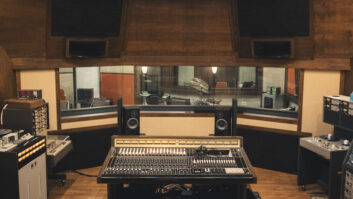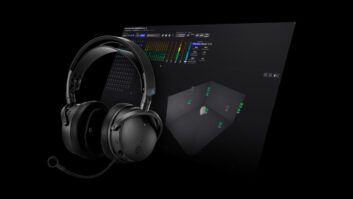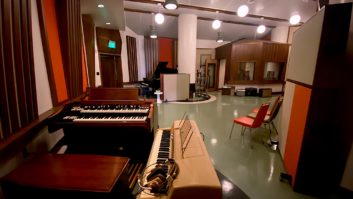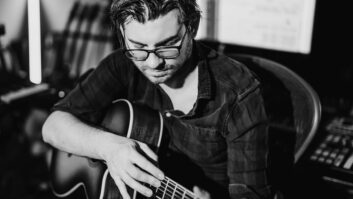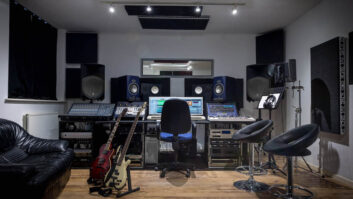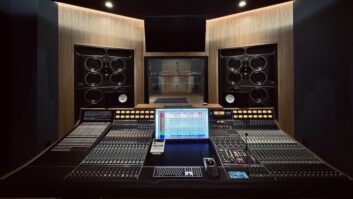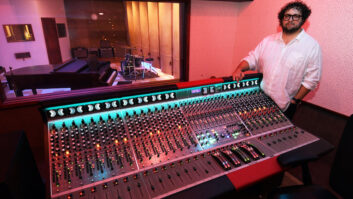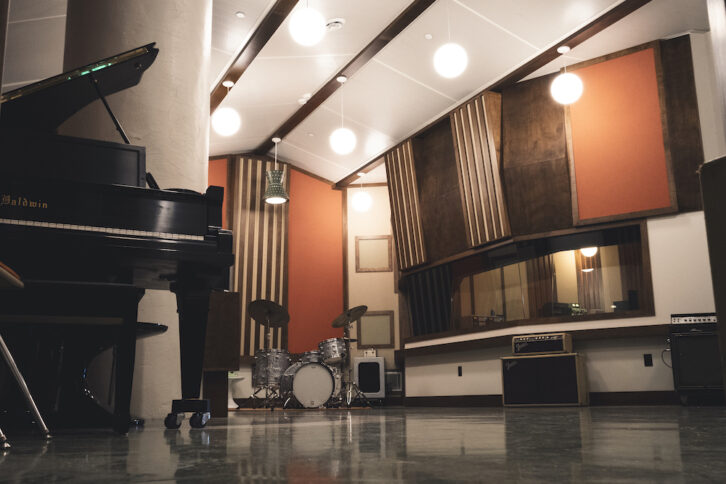
Memphis, TN (October 24, 2023)—“The gear is older than you! [Except for the Pro Tools],” exclaims the website for Southern Grooves, Matt Ross-Spang’s stylish new recording studio in Memphis, Tenn. It’s not just the equipment that’s vintage, either.
The Grammy-winning producer, engineer and mixer is very much an enthusiast of Mid-Century Modern style, and it shows. Step into the studio and you’re transported back to the 1950s and ’60s, when facilities like Sun Studios and Sam Phillips Recording—two spots where Ross-Spang spent years working—first opened for business. Heck, he even lives in a 1957 ranch house.
“I’ve gotten to work in so many amazing places over the years,” says Ross-Spang, who has always gravitated toward studios of a certain age, such as Nashville’s RCA Studio A and F.A.M.E. in nearby Sheffield, Ala. He had been dreaming of opening his own room for years, building a mental mood board of each studio’s features that he wanted to incorporate. There was a common thread, he realized: “The rooms are made for a bunch of people to record together. You can hear each other and everything’s balanced, even without headphones. I feel like that’s a lost art in today’s studios.”
In 2021, Ross-Spang found a 3,000-square-foot space on the second floor of Crosstown Concourse, a 1920s, multi-story, former Sears warehouse that has been transformed into a vertical mixed-use urban village. In consultation with acoustician Steve Durr of Durr Acoustics and studio designer Ken Capton of Solar Two Studios, he set to work building the studio of his dreams.
CREATING A SPACE
“I knew I didn’t want acoustic tile,” Ross-Spang says, opting instead for the burlap-and-wood design favored by such iconic Memphis facilities as Stax Records and Ardent Studios. “I also knew I wanted an angled ceiling, because Sam Phillips did that at Sun and Phillips Recording. I’ve always loved that look and sound.”
At his previous workplaces, he would use the lobbies as an echo chamber or a drum room.
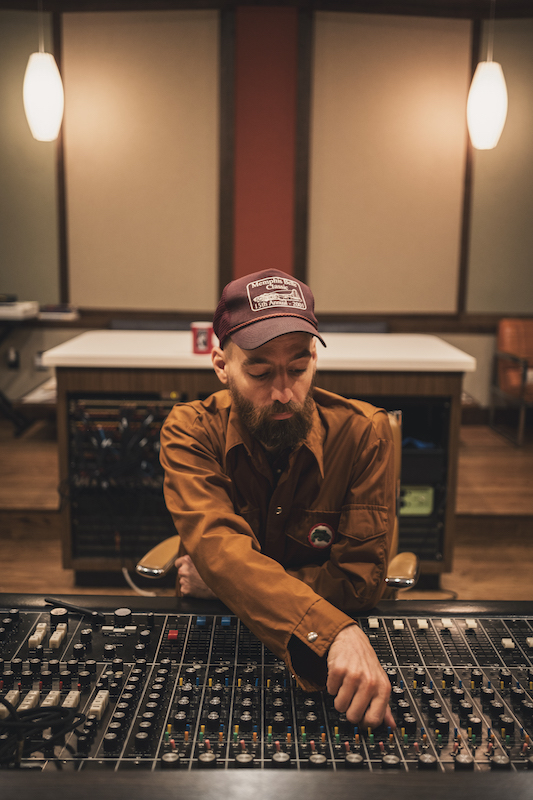
“You can hear those on a lot of records I’ve done,” he notes. “I purposely had this lounge [in the new facility] be reflective and bouncy, and I have a long hallway, so I can put guitar or drums at one end. All these rooms are wired for sound—and we have an echo chamber, as well.” As things turned out, the three-foot support columns in the space dictated the perfect control room layout, measuring 23 feet by 20 feet. “It’s a little bit bigger than I would have planned, but now I love it. It’s just the right size.” The live room is 35 by 32 feet. One iso booth was sufficient, he decided.
His first paying client was Memphis band Lucero; working on their third album together, they had started at Phillips Recording before moving to Southern Grooves.
“We loved the way it sounded here so much that we redid a lot of the stuff we had already done,” Ross-Spang says. “Part of that was that Phillips has a lot of carpet, so the drums were a little bit livelier in my space, and I have a vintage seven-foot Baldwin, so we also got a little bit better low end on the piano sound here.”
Other recent projects have included Iron and Wine and Elvis Presley. Through industry contacts, Ross-Spang hooked up with Sony’s Legacy Recordings some time ago and has remixed several Elvis reissues. The latest, Aloha From Hawaii via Satellite, is a box set commemorating the 50th anniversary of the first full-length concert to be transmitted worldwide by satellite, in January 1973.
“I was able to automate the EQ to really pull out the strings and the piano in certain sections,” he says, noting that the technology wasn’t available to engineers at the time. “I’m really proud of the new Aloha From Hawaii release because I feel like we really got some of those elements out in the mix better.”
SPECTRA SONICS CONSOLE, WITH TAPE
Beginning in the mid-1960s in Memphis, Welton Jetton, with business partner Steve Sage, assembled parts made by Spectra Sonics in Utah into mixing desks that they sold under the Auditronics brand to a good number of high-profile customers, including Stax and Ardent.
“They were very popular consoles, especially in Memphis,” Ross-Spang confirms, “but they’re really hard to find.”
Undeterred, he had long kept an eye on the Internet, and about 10 years ago spotted an all-discrete model made before Auditronics substituted its own op amp designs. The owner, Warren Parker, a Canadian broadcast and recording engineer, had purchased it in 1969, driving to Memphis to pick it up. Ross-Spang spoke with Parker, and they hit it off—but when he told Parker he wanted to buy the board, “He goes, ‘I’m not gonna ship it,’” Ross-Spang recalls.
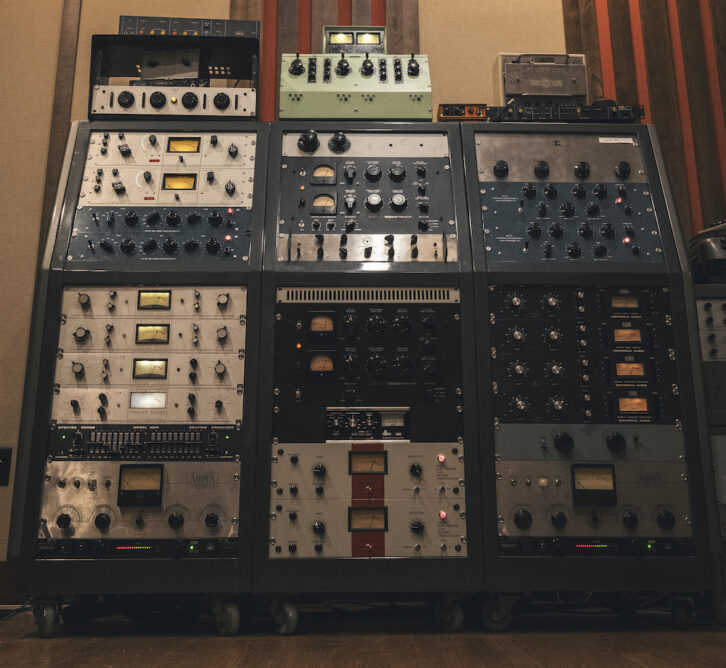
channels of original UA 100D tube mic pre and EQ modules. Photo: Cody Fletcher.
“My heart sank. Then he says, ‘I’d love to see Memphis again.’ He drove down and dropped it off—a mile from where it was built!”
With limited space available at Sun, the console sat in Ross-Spang’s house for a time, but he was able to install it when he rented the B room at Phillips Recording. “I loved it so much that I had a sidecar built; we jokingly called it the Swamp Rat,” he laughs. “I would pull channels out of the console and take them with me when I went to Nashville or Muscle Shoals to record. Now it’s the centerpiece in my control room.”
